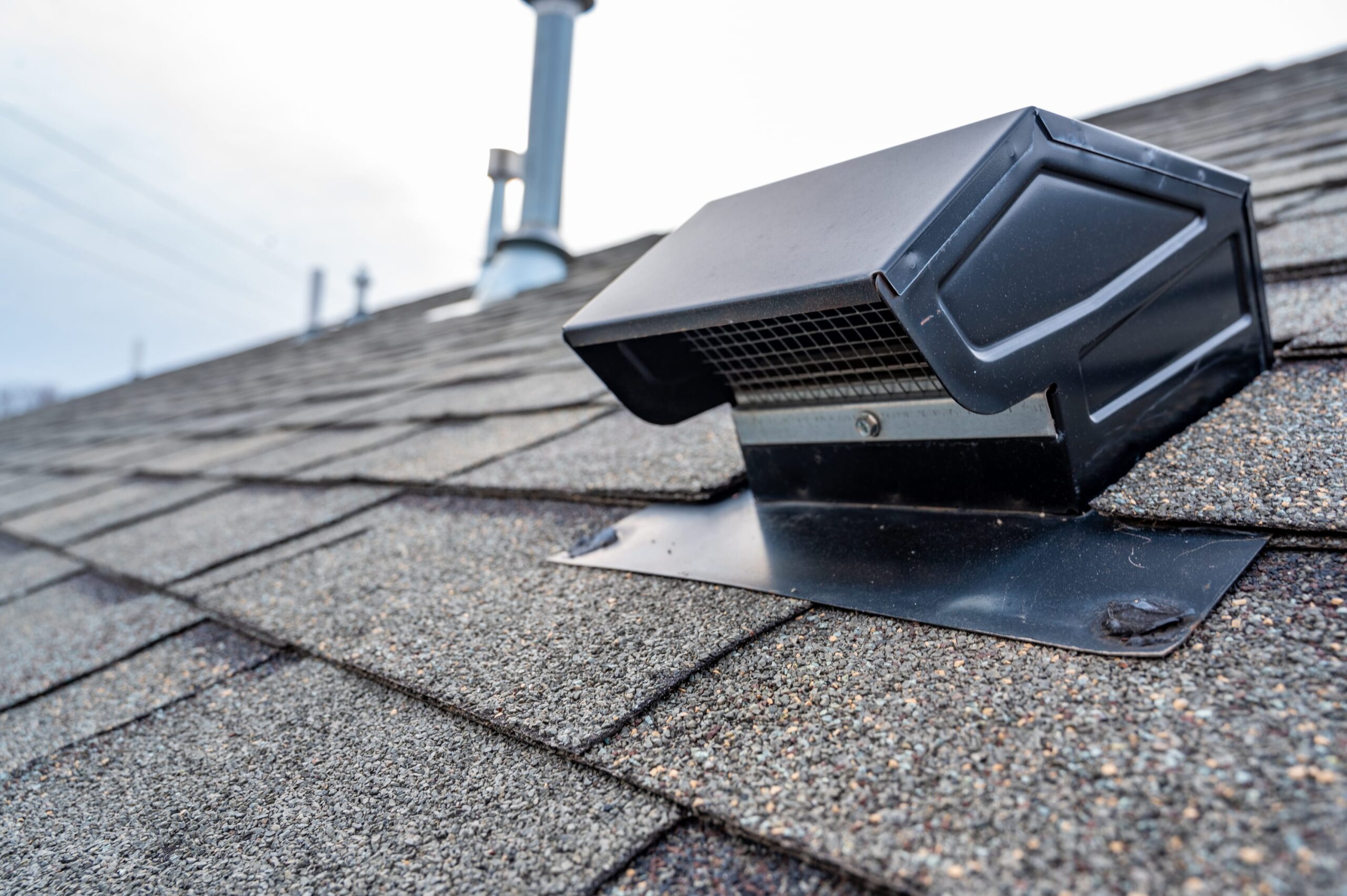Stonebridge Blog
Post
Attic Ventilation: A Complete Guide for Homeowners
March 28, 2025
Attic ventilation is crucial for maintaining a healthy home environment. It plays a pivotal role in reducing energy costs, prolonging roof lifespan, and preventing moisture-related issues like mold and mildew. Ensuring proper airflow in your attic space can also contribute to a more comfortable living space and safeguard your roofing system from potential damage. Let’s explore how attic ventilation works, its benefits, and how to resolve common issues.

How Attic Ventilation Works
Attic ventilation relies on the principle of air circulation—a balance between intake vents and exhaust vents. This system allows cooler outside air to enter while hot air escapes, regulating temperature and minimizing moisture.
The Role of Intake Vents
At the center of intake ventilation are soffit vents, which are installed along the eaves. These vents introduce fresh, cooler air into the attic. By pulling in cooler air, soffit vents help regulate the temperature, preventing heat buildup and maintaining airflow efficiency within the attic space.
The Role of Exhaust Vents
Exhaust fans are designed to expel hot air and moisture. Common types include ridge vents along the roofline and turbine vents, which use wind power to draw warm air out. Together, these vents form a cycle, ensuring continuous air movement through the attic.
The Science Behind Air Circulation
Effective attic vents prevent stagnant air. Warm, moist air gets trapped without proper airflow, potentially damaging roof sheathing, rafter spaces, and other structural components. Installing rafter vents or baffles can further enhance air circulation, keeping the attic and the roof deck in top condition.
Benefits of Proper Attic Ventilation
Proper attic ventilation delivers numerous advantages for homeowners. Beyond just regulating temperature, it provides long-term savings and protects your investment.
1. Energy Efficiency Improvements
By keeping the attic cooler in summer, ventilation reduces the strain on your HVAC system. This means lower air conditioning costs and improved home energy efficiency. For instance, the GAF ventilation calculator shows how optimizing the vent area can enhance your attic’s overall performance.
2. Increased Roof Lifespan
Insufficient ventilation can trap moisture, leading to roof rot and degradation of roof shingles. By maintaining airflow, you protect the structural integrity of your roof and extend its lifespan. For more, see Why do I need attic ventilation?.
3. Avoiding Ice Dams and Mold Growth
During winter, warm air from the living space can melt snow on the roof. When ice refreezes along the edges, it creates ice dams that trap water. Similarly, high humidity fosters mold and mildew. Proper ventilation mitigates these problems by maintaining temperature balance and moisture control.
Identifying and Solving Common Ventilation Problems
Even with an attic ventilation system, homeowners may face issues. Identifying problems early and implementing solutions can save costly repairs.
Signs of Poor Ventilation
Common indicators include:
- Excessive heat in the attic.
- Visible mold or mildew on the attic floor or drywall.
- Rusted nails or damp roof deck.
- An overworked thermostat or high energy bills.
Fixing Blocked Intake or Exhaust Vents
Obstructions in soffit vents or ridge vents restrict airflow. Check for attic insulation blocking the vents or debris buildup. Installing baffles can prevent blockage while maintaining a clear path for air circulation.
Upgrading or Adding Vents
Modern solutions like power vents and attic fans can enhance ventilation in larger or more complex roofs. Ensuring compliance with building codes and calculating the correct amount of roof vent area (based on the square feet of attic space) is critical for achieving proper results.
Professional Help for Your Attic Ventilation
While DIY solutions can address some issues, a professional roofing contractor can provide tailored advice and ensure the job is done right.
Why Choose Stonebridge Roofing
Stonebridge Roofing specializes in diagnosing and solving attic ventilation issues. Their expertise ensures your ventilation system meets both functional and building code standards. With a focus on customer satisfaction, they provide solutions for roof ventilation, whether it’s adding new static vents or upgrading with advanced ventilation products.
Check out Stonebridge’s guide on Roof Maintenance for Spring to learn how ventilation ties into your seasonal home improvement tasks.
Contact Us!
Attic ventilation is an essential yet often overlooked aspect of home improvement. By maintaining airflow through an effective balance of intake and exhaust ventilation, you protect your home, reduce costs, and improve comfort year-round. If you notice signs of poor attic ventilation or want to optimize your system, consider contacting Stonebridge Roofing for professional guidance.
Take control of your attic ventilation today—your roof, home, and wallet will thank you!



